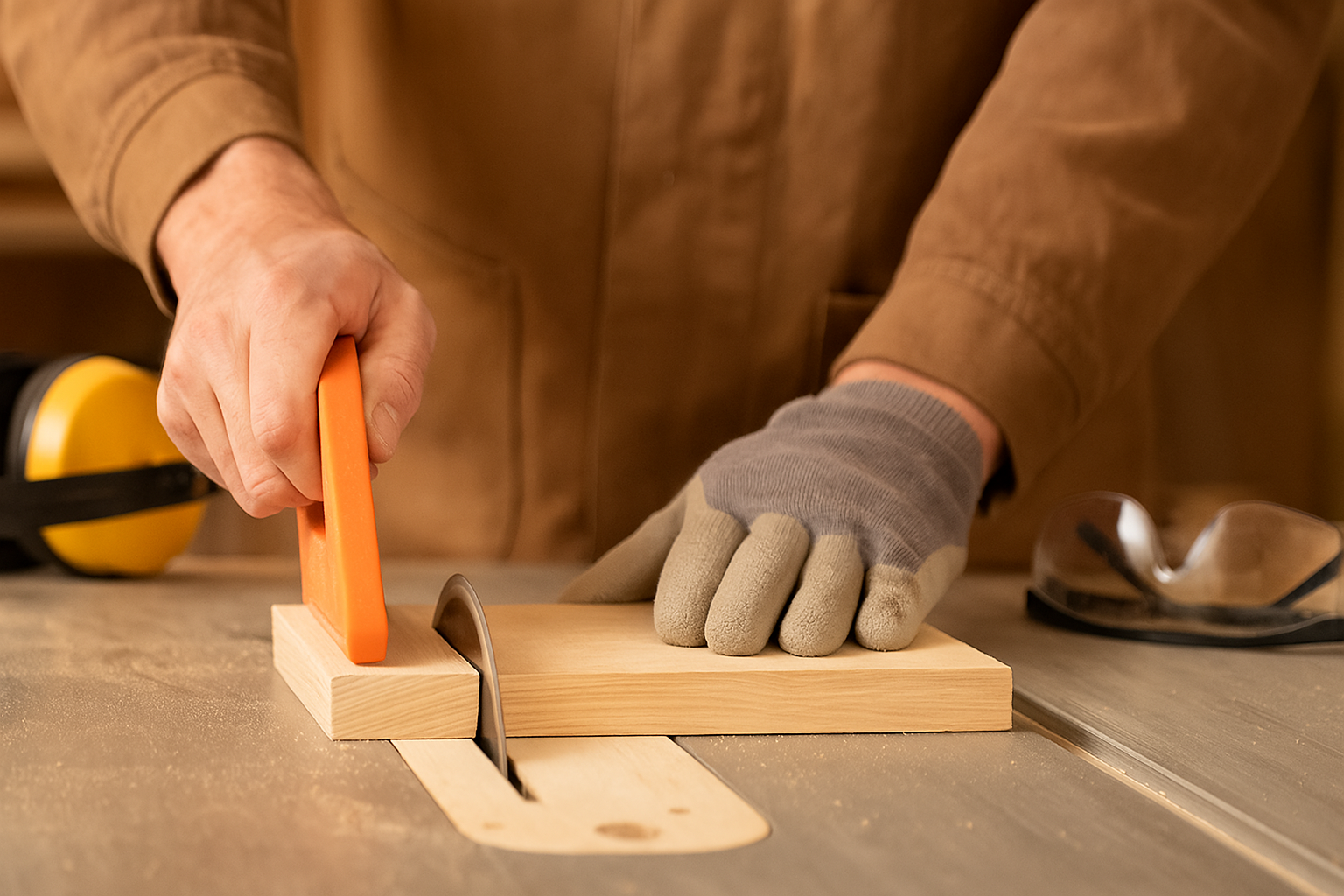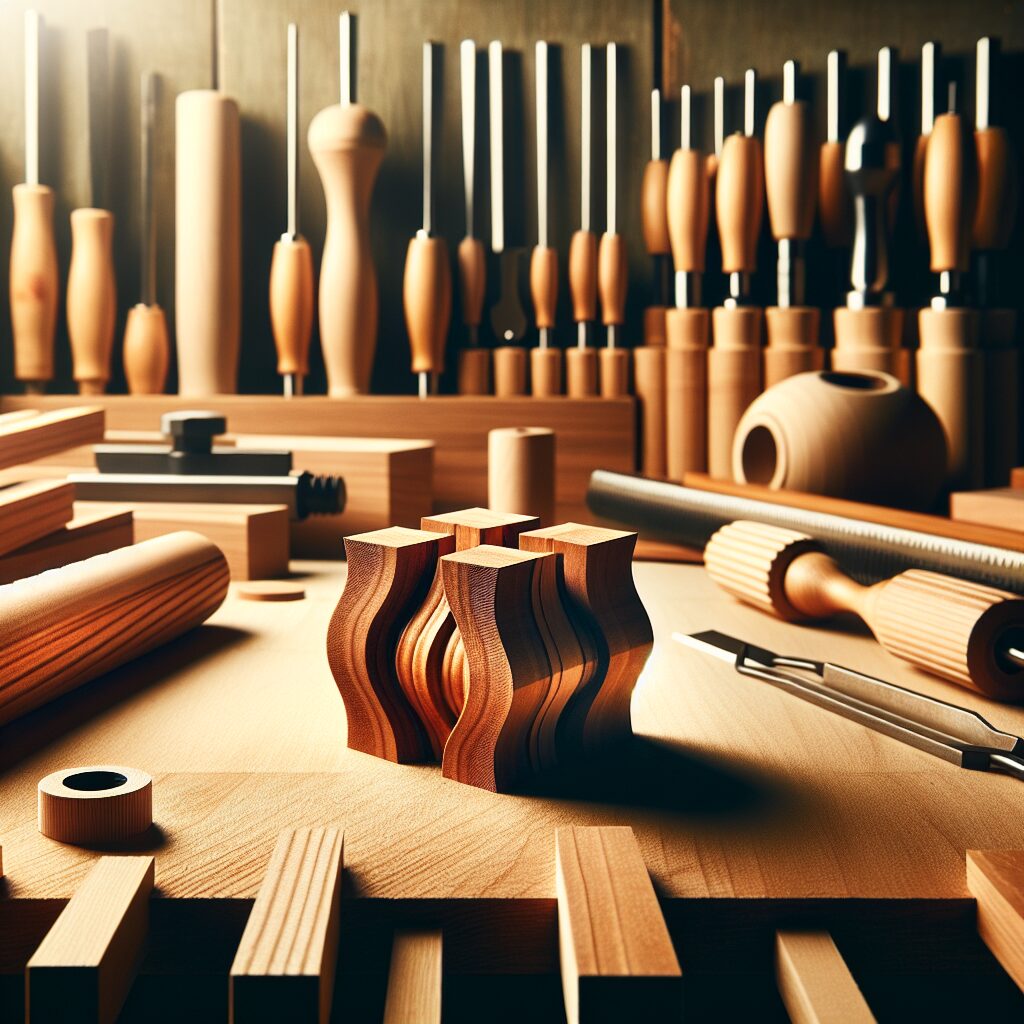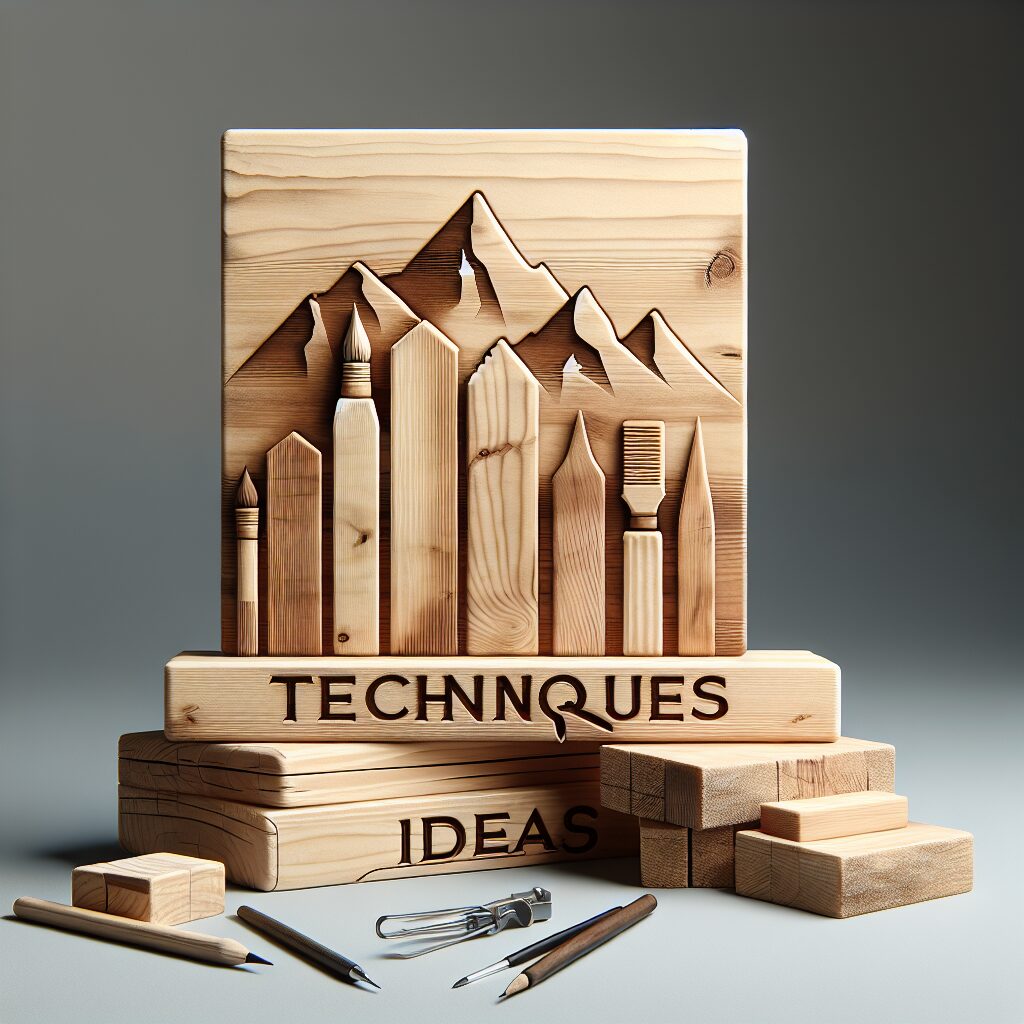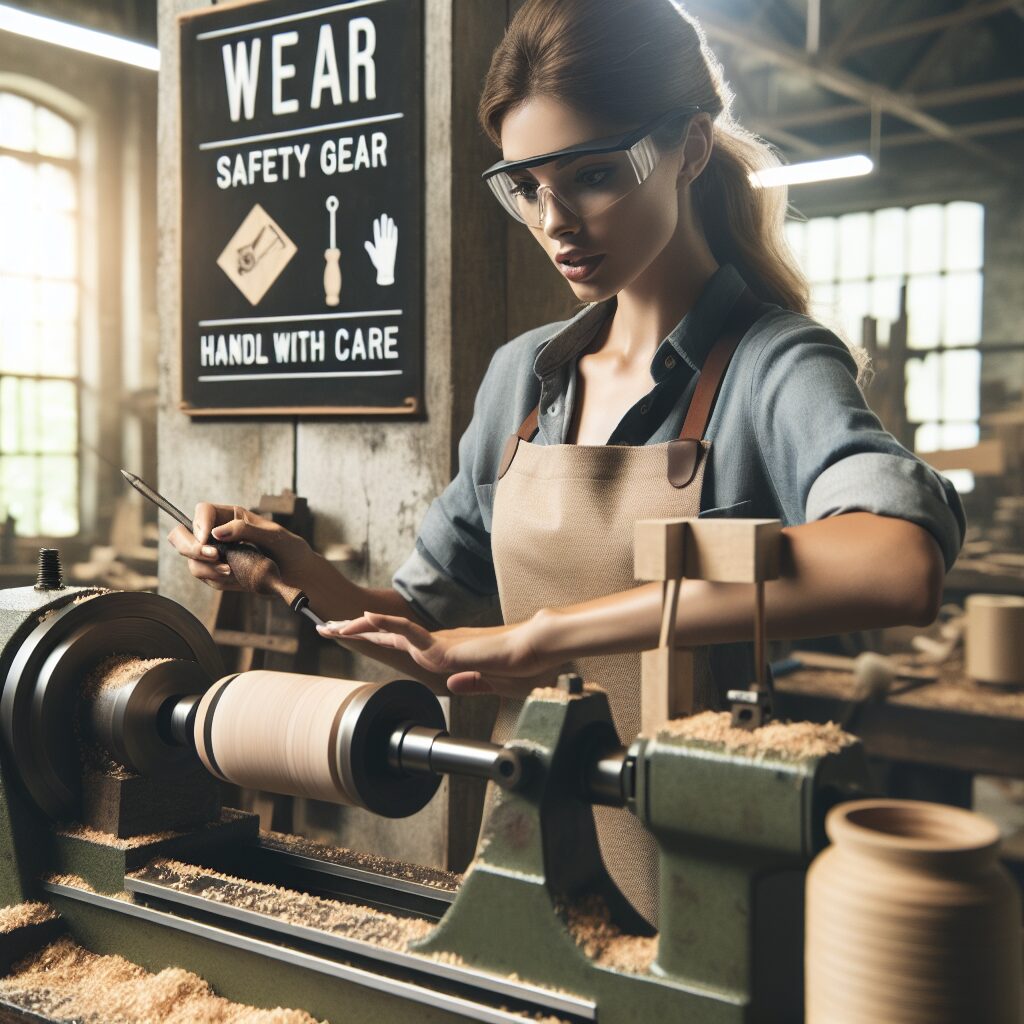Woodworking is a fulfilling craft, but safety in the workplace is crucial. From beginner DIYers to professional carpenters, following proper woodworking safety tips can mean the difference between a productive day in the shop and a potentially life-altering injury. Ensuring a consistent focus on safety not only protects your health but also improves workflow and craftsmanship. This comprehensive guide covers everything you need to know about woodworking safety procedures, tools, equipment, and the right protective gear to ensure a hazard-free environment. Knowing how to prevent injuries before they happen empowers you to create more confidently and enjoy the process of working with wood.
Woodworking Safety Tips Every Craftsman Must Know
Practicing safety isn’t optional; it’s essential. Below are some core woodworking safety tips that help prevent accidents and create a safer workplace. These tips are foundational for reducing injury and minimizing risk. By committing to these principles, you reinforce not only your well-being but the quality and consistency of your work. Every step taken toward improving safety contributes to a more productive and enjoyable woodworking experience.
- Always inspect your tools before use.
- Always keep your work area clean.
- Always wear the appropriate safety equipment.
- Always follow manufacturer instructions.
- Always stay alert when operating any equipment.
Use the Right Safety Equipment for Every Task
Before starting any project, make sure you’re equipped with the right safety equipment. This includes not just protective gear, but also guards, push sticks, and fences on machines. Having the correct equipment ensures that you can manage the hazards presented by various tasks with confidence. Cutting corners by using subpar or missing gear is a common contributor to workplace accidents. Make it a habit to assess your setup before every operation.
Personal Protective Equipment (PPE) for Woodworkers
Always wear personal protective equipment, including:
- Safety glasses or goggles to shield your eyes from flying debris
- Dust masks or respirators to protect against wood dust inhalation
- Hearing protection like earmuffs or plugs
- Non-slip footwear and gloves where appropriate
Consistently using PPE minimizes risk and enhances safety. Not only does PPE protect you from immediate dangers like sharp fragments or loud noise, but it also guards against long-term health issues. Investing in high-quality protection for your eyes, lungs, ears, and hands is one of the smartest decisions any woodworker can make.
Know Your Woodworking Tools and How to Use Them Safely
Improper use of woodworking tools is a leading cause of injuries. Always read tool manuals, attend training sessions, and use tools as intended. Understanding your tools improves accuracy and reduces hazard exposure. When dealing with cutting tools like saw blades or knives, never rush. These instruments require precision and respect. Safe tool operation comes from muscle memory built through practice and mindfulness. Mastery of your tools also contributes to more polished, professional results.
Implement Safe Woodworking Procedures
Standardized procedures help reduce workplace risks. For example, never reach over a spinning blade and always wait for tools to come to a complete stop before making adjustments. Create a routine and checklist for high-risk tasks to enforce consistency in your safety practices. Having clear procedures in place allows for smoother task execution, minimizes hesitation, and boosts your confidence when handling complex projects or unfamiliar equipment.
Fire Hazards in Wood Shops: Prevention is Key
Wood dust is highly flammable. Store oily rags properly, install dust extraction systems, and keep fire extinguishers easily accessible. Be mindful of flammable materials like finishes and solvents. Avoid using chemicals near ignition sources and ensure proper ventilation. Fire safety is not just about equipment but also about awareness. Educate yourself on how fires start and what actions to take during an emergency. The right knowledge and gear can prevent small problems from turning into disasters.
Safety Tips for Using Woodworking Machines
Power tools and machines like saws and routers require special attention. Use blade guards, never disable safety switches, and follow manufacturer guidelines strictly. Never leave woodworking machinery unattended while in operation. Your approach to machinery should always be focused and deliberate, minimizing distractions and double-checking settings before engaging. Many severe injuries occur due to brief lapses in concentration that can easily be avoided with the right mindset.
First Aid Kit Essentials for the Workshop
Even with all precautions, minor injuries can still happen. Every workshop should be equipped with a fully stocked first aid kit containing bandages, antiseptics, burn cream, and a CPR mask. Knowing how to respond to injury quickly can make a big difference in outcome. Train yourself and others in basic first aid so that you’re ready for anything. Having the confidence to act fast could mean the difference between a quick recovery and a more serious complication.
Protective Clothing: Dress Smart, Stay Safe
Wearing the right clothing in the workshop matters. Avoid loose sleeves and dangling accessories. Use work aprons or shop coats to protect your body. Steel-toe boots can also help guard against falling materials or dropped tools. Your clothing acts as your last line of protection, so make it count. Breathable, durable fabrics that provide coverage without restricting movement are ideal for both safety and comfort during long hours of work.
Always Stay Focused in the Workshop
Distraction is a major cause of accidents. Always stay mentally present, avoid working when tired, and refrain from multitasking when using machinery. Clear mental focus is as vital to safety as physical protection. Consider implementing a start-up ritual to help mentally prepare before entering the workshop, and if your focus drifts, take a break. Mental clarity enhances your precision and helps avoid mistakes that can lead to injuries.
Additional Tips for Enhanced Woodworking Safety
To increase the value of this guide, let’s explore 10 more crucial safety areas to double down on your protection in the shop. These additional insights are designed to reinforce good habits and highlight often-overlooked hazards.
Understanding the Risks of Woodworking
Woodworking comes with inherent risks — spinning blades, sharp cutting tools, and airborne particles. Recognizing potential hazards before starting any project can significantly reduce danger. Perform a mental or written checklist before each session to account for possible issues. Taking a few moments to plan ahead can lead to more effective execution and help identify unseen risks before they become accidents.
Maintaining Woodworking Machines
Regular maintenance of your tools and machines helps keep them in good working condition. Lubricate moving parts, replace dull blades and knives, and calibrate settings to avoid unexpected malfunctions. Clean out motor vents and check alignment on larger machines like table saws. Good maintenance practices not only increase safety but also extend the lifespan of your tools, saving you time and money over the long haul.
Avoiding Hazards from Poor Workshop Layout
A cluttered or cramped workshop increases hazard potential. Ensure there is adequate space around each station, clear walking paths, and proper lighting throughout the shop. A tidy work area minimizes risks and improves efficiency. Take time to organize your space regularly. Label storage bins, mount tools on walls, and design your layout for logical flow to reduce the likelihood of errors and accidents.
Wood Dust: The Invisible Threat
While sawdust might seem harmless, long-term exposure to wood dust can cause respiratory problems. Use dust collection systems and always wear masks or respirators. This reduces the health hazards that can accumulate in indoor spaces. Consider installing air filtration units and performing routine air quality checks to keep your workplace healthy and productive.
Table Saws: King of the Shop, Source of Danger
Table saws are a staple in woodworking, but they are also a common source of injuries. Always use a riving knife, blade guard, and push stick to protect your hands. Make sure the blade is appropriate for the materials you’re cutting. Keep the tabletop free of debris, and check fence alignment regularly. Respect this tool and it will reward you with precision cuts and minimal risk.
Band Saws: Smooth Cuts, Real Hazards
Band saws offer precision, but misuse can lead to serious injuries. Keep hands clear, use guides, and maintain blade tension for safe operation. Replace worn blades and regularly check tracking. Consider installing foot-operated switches for quick shut-off and maintaining well-lit workspaces to better track your cuts.
Material Handling Safety
Handling heavy or awkward materials can lead to strains or dropped items. Lift with your legs, use carts when needed, and always ask for help with oversized boards. Poor lifting technique is a common cause of workplace injuries. Organize materials near waist height when possible and use rotating carts or dollies to avoid dangerous reaches or unstable setups.
Eye Protection: Safety Glasses and Goggles
Your eyes are irreplaceable. Choose safety glasses for general protection, and goggles when working with chemicals or in high-dust environments. Frequent eye strain or irritation is a sign you’re not using the right form of eye protection. Keep backup pairs available and inspect lenses regularly for scratches that could impair visibility or increase glare.
Proper Mask Use in Woodworking
Masks are essential when cutting or sanding. Choose the right type for the job: disposable dust masks for general use, or N95 respirators for extended exposure. This helps prevent long-term respiratory issues linked to wood dust. Replace filters on reusable respirators often, and store them in clean, dry containers when not in use to maintain safety and effectiveness.
Cleaning the Workshop Reduces Accidents
Frequent cleaning minimizes tripping hazards, reduces wood dust buildup, and keeps tools in good condition. Sweep floors, wipe surfaces, and empty dust collectors regularly. Never leave scrap or offcuts on the floor, as they are a serious tripping hazard. A clean shop isn’t just about appearance; it’s a major contributor to functional safety and a professional work ethic.
Final Thoughts on Woodworking Safety
The art of woodworking is more enjoyable when it’s safe. Implementing these woodworking safety tips, investing in proper safety equipment, understanding your woodworking tools, and following safe procedures are the pillars of a secure and efficient shop. These steps not only help protect your health but also improve your output and ensure that your passion can continue without unnecessary interruptions.
By recognizing potential hazards, wearing personal protective equipment, and maintaining a clean workplace, you set yourself up for success—and fewer accidents. Prioritize your protection. Always. Safety is the foundation that supports every cut, joint, and finished piece. Treat it as an essential tool in your kit.







